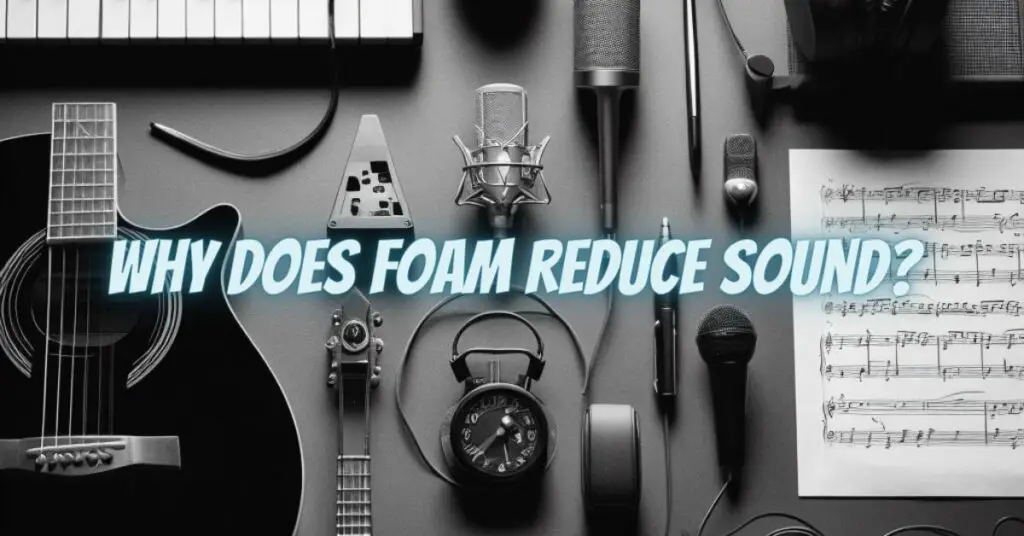Foam reduces sound by absorbing sound waves. When a sound wave hits a piece of foam, the energy of the sound wave is converted into heat. This process is called sound absorption.
Foam is able to absorb sound because of its open-cell structure. Open-cell foam is made up of interconnected air pockets. When a sound wave hits a piece of open-cell foam, the sound wave travels through the air pockets. The sound wave causes the air pockets to vibrate, which converts the energy of the sound wave into heat.
The amount of sound that foam absorbs depends on a number of factors, including:
- The density of the foam: Denser foams absorb more sound than less dense foams.
- The thickness of the foam: Thicker foams absorb more sound than thinner foams.
- The frequency of the sound wave: Foam absorbs different frequencies of sound waves at different rates. Foam is generally more effective at absorbing high-frequency sound waves than low-frequency sound waves.
Foam is used to reduce sound in a variety of applications, including:
- Recording studios: Foam is used in recording studios to absorb unwanted reflections of sound waves. This helps to create a cleaner and more accurate sound recording.
- Home theaters: Foam is used in home theaters to improve the sound quality of the audio system. Foam can help to reduce echo and reverberation, which can create a more immersive and realistic listening experience.
- Machinery: Foam is used to reduce the noise produced by machinery. For example, foam is used in refrigerators and air conditioners to reduce the noise of the compressor.
- Vehicles: Foam is used in vehicles to reduce the noise from the engine and road. For example, foam is used in car doors and under the hood to reduce noise.
Types of acoustic foam
There are a number of different types of acoustic foam available. The most common types of acoustic foam include:
- Open-cell foam: Open-cell foam is the most common type of acoustic foam. It is made up of interconnected air pockets, which makes it effective at absorbing sound waves.
- Closed-cell foam: Closed-cell foam has a denser, more closed-cell structure than open-cell foam. This makes it more effective at blocking sound waves than absorbing them.
- Pyramid foam: Pyramid foam has a pyramid-shaped surface. This helps to diffuse sound waves and reduce reflections.
- Wedge foam: Wedge foam has a wedge-shaped surface. This is similar to pyramid foam, but wedge foam is generally more effective at absorbing sound waves.
Choosing the right acoustic foam
When choosing acoustic foam, it is important to consider the following factors:
- The application: What are you using the acoustic foam for? Are you using it to improve the sound quality in your home theater, or to reduce the noise from your machinery?
- The type of sound waves you want to absorb: What frequencies of sound waves do you want to absorb? If you want to absorb high-frequency sound waves, you will need to use a different type of acoustic foam than if you want to absorb low-frequency sound waves.
- The budget: Acoustic foam can range in price from a few dollars to over a hundred dollars per square foot. It is important to set a budget before you start shopping.
Foam can be a very effective way to reduce sound. It is used in a variety of applications, including recording studios, home theaters, machinery, and vehicles. When choosing acoustic foam, it is important to consider the application, the type of sound waves you want to absorb, and your budget.


